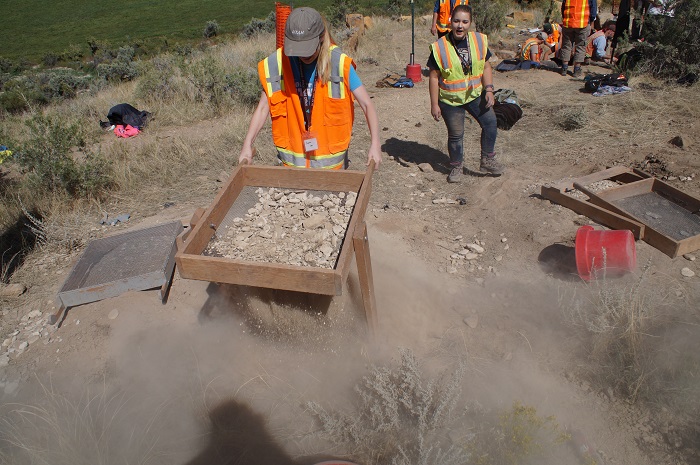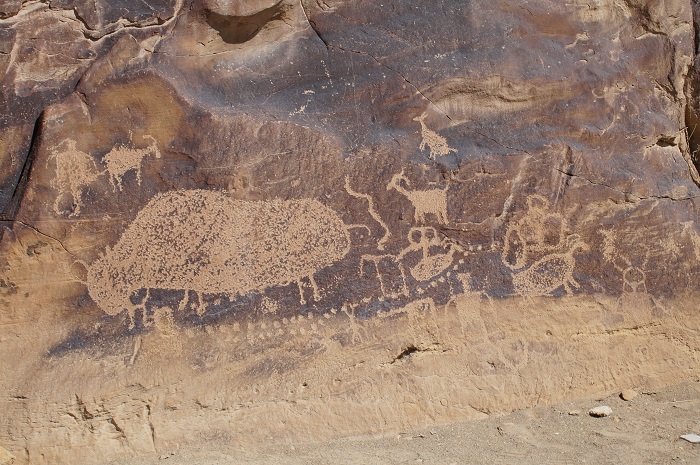
If you were at the Museum of Fine Arts at the University of Utah and someone started carving their initials into a sculpture, you’d do something to stop it, right? Then why don’t we do more to stop people from defacing rock art found throughout Utah’s landscape?
Archaeologists from more than a dozen agencies and private organizations invited the public to tackle this issue in Nine Mile Canyon during Stewardship Day on September 16.
The annual event is hosted by Project Discovery Utah, a nonprofit archaeology education program for high school students. The organization was launched in 2009 to educate students to be ambassadors and to educate others about the importance of protecting Utah’s cultural heritage. What better place to practice their skills than the overhangs and dwelling ruins found in Nine Mile Canyon?

Stewardship Day included archaeologist-led tours of some of the most famous sites in the canyon, which is teeming with petroglyphs, pictographs, artifacts, and dwellings. Some say it’s the largest concentration of prehistoric rock art in the world. At each site, experts and students were paired up to point out the hardest-to-spot markings among the rocky crags and crevices as well as to share the canyon’s history.
In addition, activities like throwing atlatls, grinding corn on metates, and trying a hand at traditional arts and crafts, were coupled with information from organizations with interests in the canyon, including the Nine Mile Canyon Settlers Association, Utah Archaeology Society, Utah State Antiquities, and others.
The Project Discovery Facebook page notes, “Without a doubt we got folks excited about archaeology, excited about history, excited about the Canyon, and excited about protection and preservation.”
Nine Mile Canyon boasts more than 1,000 archaeological sites, and those are just the ones that have been identified and cataloged. Others are still being discovered. This year, students from Carbon County High School and other volunteers worked with archaeologists to excavate a pit-house in the canyon. Finding artifacts such as small prehistoric fragments of pottery and beads shaped from small pieces of shale was the highlight of hours of careful excavation, and sifting buckets of dirt through a screen so nothing was missed.
Art and artifacts in the canyon are from the Archaic Fremont and Ute Indian periods, dating from 7,500 BC to about 1880 AD. Some of the most famous panels are Big Buffalo, The Great Hunt, and Rasmussen Cave, all of which were part of the Stewardship Day tours this year.
The name “Nine Mile Canyon” is a little deceiving. According to the USGS, the name comes from a map that was prepared in 1872 during a government expedition by John Wesley Powell. It seems the canyon is the site of a “nine-mile triangulation” used in surveying, resulting in the survey map being titled Nine Mile Creek. Despite the fact that the canyon is actually more than 40 miles long, the name stuck.
Stewardship Day won’t come around again until next fall, but if you go down to Nine Mile Canyon on your own, remember that the sites are protected by state and federal laws. Visit the ruins but respect the private property—there’s a lot of it in the canyon—and practice the principles at the core of the Stewardship Day hosts, Project Discovery: tread lightly and leave the land and its rock art as you find them for everyone to enjoy.
More information about Project Discovery Utah and Stewardship Day can be found at www.facebook.com/ProjectDiscoveryUtah.






